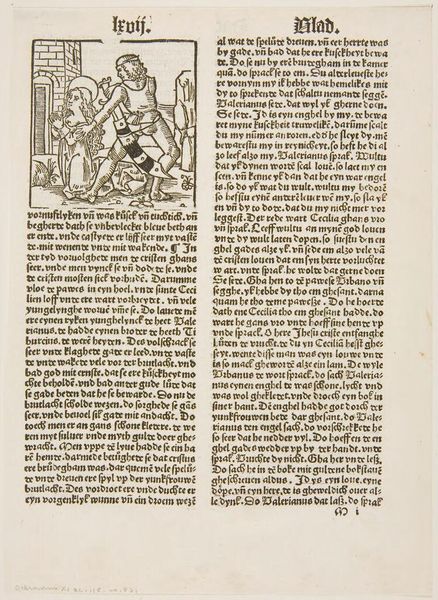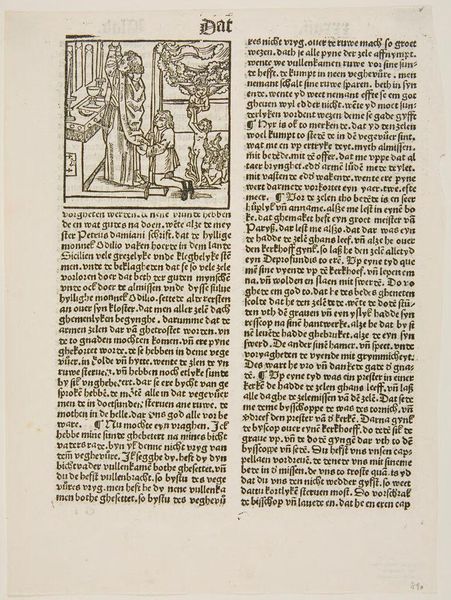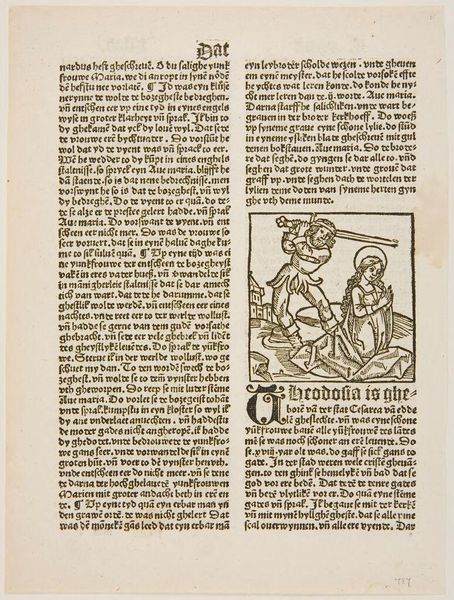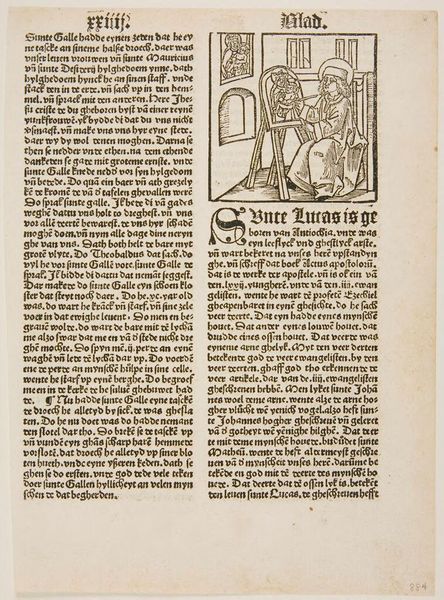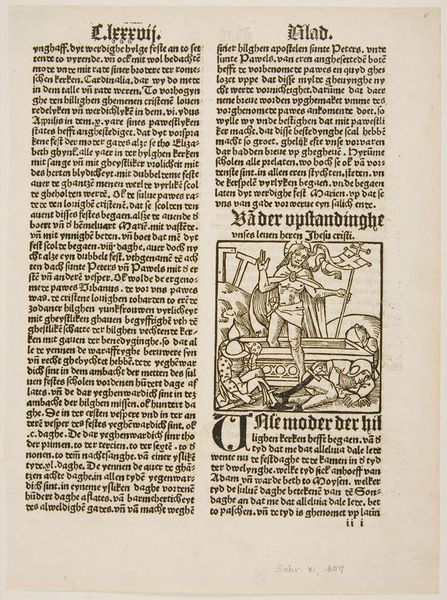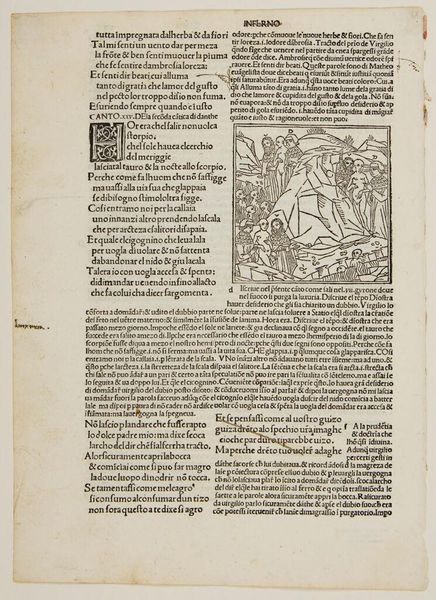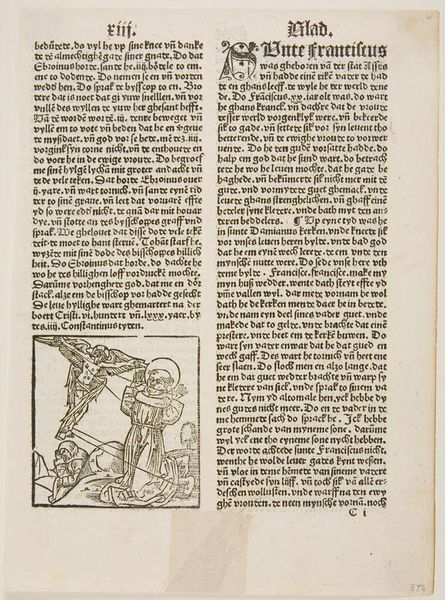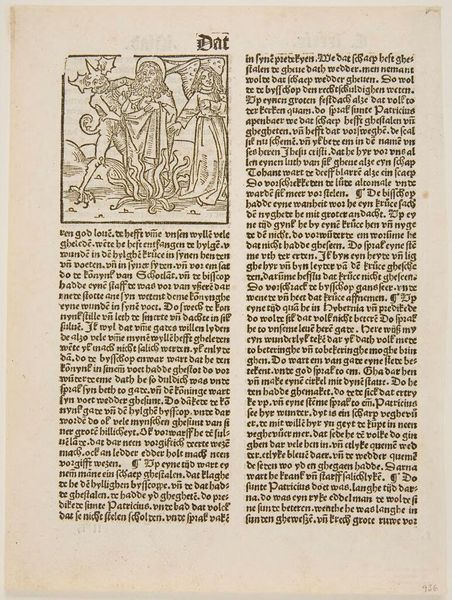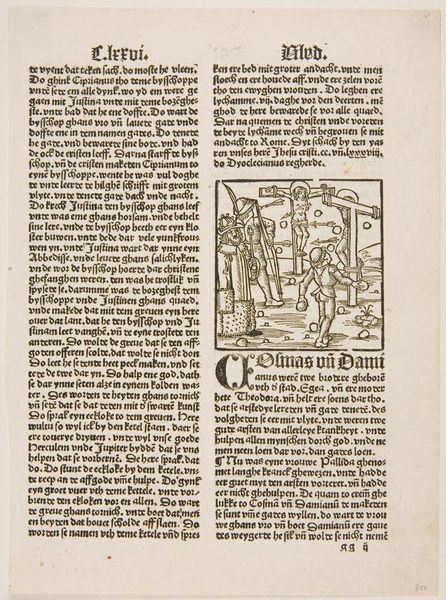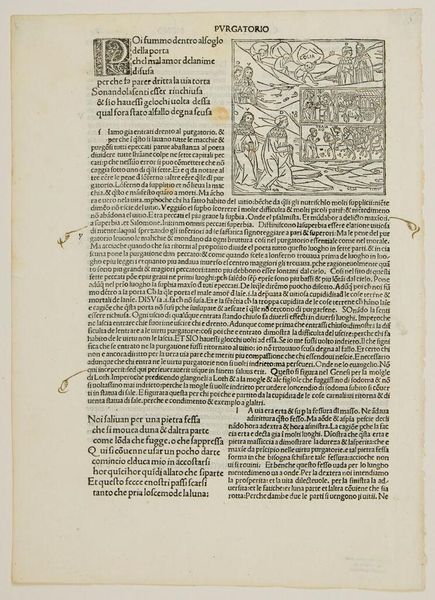
Saint Mary of Egypt, Illustration from Jacobus de Voragine, Heiligenlegenden. Cologne, Ludwig von Renchen, 1485 c. 15th century
0:00
0:00
Copyright: CC0 1.0
Curator: This is an illustration from Jacobus de Voragine's "Heiligenlegenden," printed in Cologne around 1485. It depicts Saint Mary of Egypt, though the artist remains anonymous. Editor: It’s so stark. The woodcut technique gives it a powerful, almost primitive feel. The contrast between the clothed figure and the naked saint really jumps out. Curator: It highlights a key moment in her story: her encounter with Zosimas in the desert. The woodcut medium itself speaks to the wider context of printmaking's rise and how it disseminated hagiographies, shaping popular piety. Editor: Absolutely. The raw, unrefined lines suggest the labor involved in its production and the mass consumption of religious narratives at that time. It connects spiritual devotion to a very tangible, material process. Curator: And let's not forget the context of the printing press allowing for wider distribution of these stories, impacting social and religious values. Editor: A powerful illustration—it really makes you consider the confluence of faith, labor, and the materials that make that faith visible. Curator: It certainly offers a fascinating glimpse into late medieval piety and the ways in which images shaped it.
Comments
No comments
Be the first to comment and join the conversation on the ultimate creative platform.
